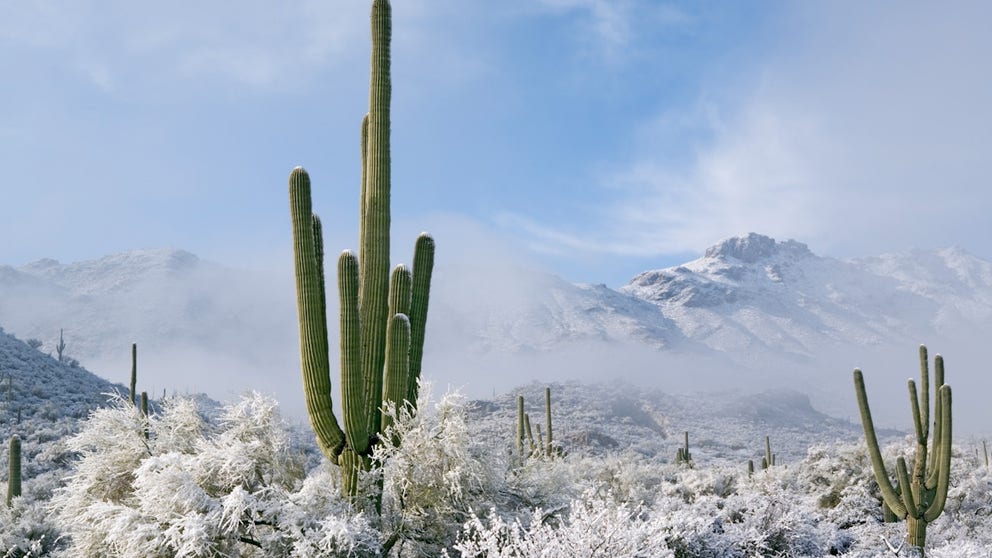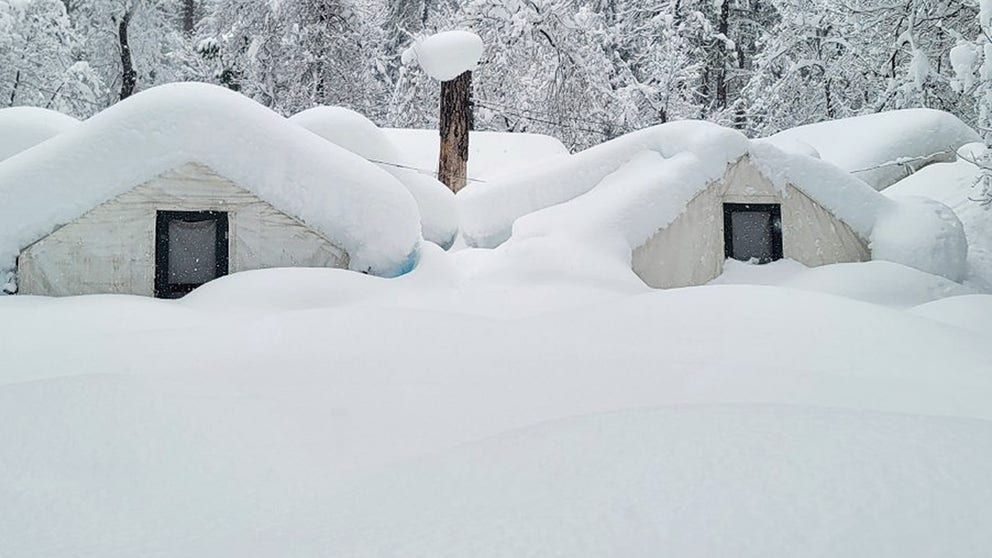California's 'ARkStorm': Historic 1000-year floods of 1861-62 featured 8 weeks of atmospheric rivers
Imagine Disneyland under feet of water for weeks. Rivers swelling to levels never seen before and never seen since. Days of rain stretch into weeks as floodwaters rise to epic levels.
Atmospheric rivers explained: What you need to know
What is an atmospheric river? The largest freshwater 'rivers' on Earth, atmospheric rivers are long, narrow bands of highly concentrated water vapor flowing in the atmosphere.
SACRAMENTO, Calif. – Imagine Disneyland under feet of water for weeks. Rivers swelling to levels never seen before and never seen since. Days of rain stretch into weeks as floodwaters rise to epic levels.
California may have endured an onslaught of tropically-infused atmospheric river storms that filled the calendar for months at the end of 2022 and the start of 2023 and is staring at another atmospheric river this weekend, but those storms pale in comparison to the historic floods during the winter of 1861-1862.
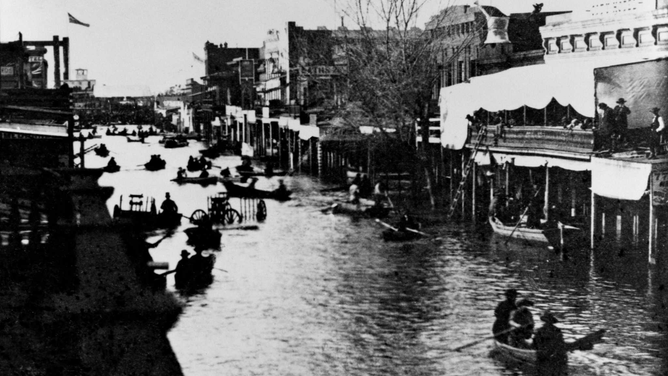
Floodwaters in Sacramento, California in January 1862.
(California State Library / FOX Weather)
Colloquially today known as an "ARkStorm" - a deft reference to an "atmospheric river (AR) 1,000 (k) year storm" - the storms were a recipe for disaster for a young region that had recently been settled. Abraham Lincoln was president at the time, and America was embroiled in the first months of the Civil War. But out West, California's population was bulging to about a half million in the wake of the great Gold Rush about a dozen years prior.
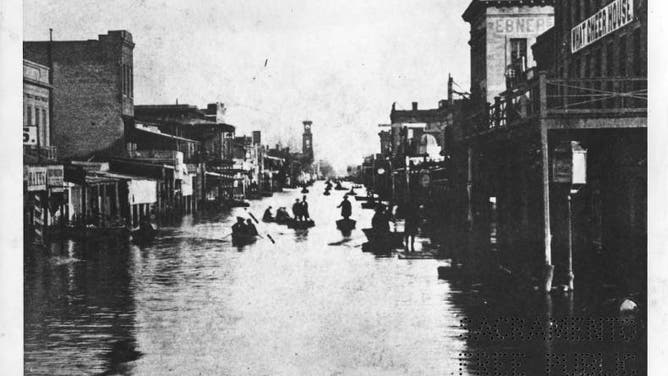
This 1861 photograph shows flooding at K and Front streets. A nine-year stretch of calm weather was broken with record flooding in the winter of 1861 to 1862. The What Cheer House saloon is prominent to the right of the photograph, as is Ebner's Hotel. Boats and rafts are visible to the steepled structure in the distance, Saint Rose of Lima Catholic Church at Seventh and K streets.
(Sacramento Public Library / FOX Weather)
Many of the newcomers settled in flat areas near the river for water supply and ease of commerce and transportation, with mining, ranching and agriculture the main fuel for the economy. In the East, where many came from, floods occurred with thunderstorms in spring and summer, not during the fall and winter. They were also not accustomed to living near large mountain ranges that concentrate rainfall into confined riverbeds.
So when the first of a series of likely atmospheric river-type storms hit the West Coast on Dec. 2, 1861, it was a new experience for many.
30-foot-deep water in California's Central Valley
The storm first struck Oregon's Willamette Valley and southern Washington Territory, according to research by meteorologist Larry Schick. The temperature reading at Fort Vancouver in Washington Territory was 58 degrees at 7 a.m. – well above average and signaling a warm, tropically-infused atmospheric river-type storm that would have carried plenty of moisture.

A birds-eye view of a flooded street; brick buildings line both sides of the street; in the lower left is a sign "Dentist" on side of the building; in front of the store is another standing sign "WW.Thomas Dentist New York"; in front of second sign a man stands on a plank and looks into the distance; in middle distance a man poles his way across the street on a raft; another group is further down the street; on left side, a sign "Connell, Ryan & Co" and on right side "St. George Drug."
(California History Room, California State Library, Sacramento, California. / FOX Weather)
Shick found the storm would dump so much rain it would flood the Willamette River with raging waters equal to the flow of the mighty Mississippi River – a river 100 times larger. Now 162 years later, that storm still remains the flood of record for the Willamette. It's not alone.
Schick found the storm eventually pushed south and redeveloped into another atmospheric river-type storm as it crashed into southern Oregon, then Northern California.
SEE SOME OF THE MOST CATASTROPHIC ATMOSPHERIC RIVERS AND FLOODING IN CALIFORNIA HISTORY
The Sacramento River would jump from about 2-3 feet deep to 20 feet deep and set the first of four all-time records that winter.
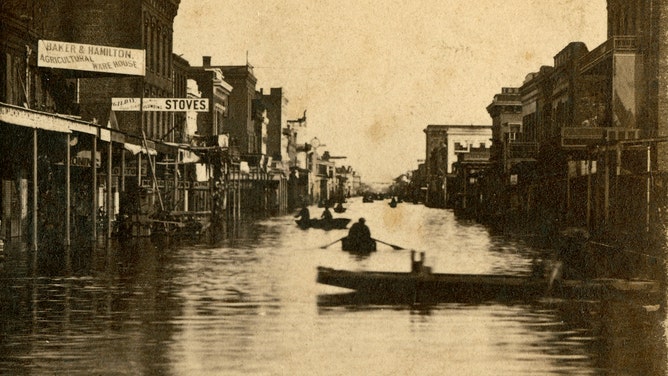
Shows buildings including Baker & Hamilton, Gilday; flooded streets with men in rowboats.
(California History Room, California State Library, Sacramento, California / FOX Weather)
HOW FLOODWATER CAN MAKE YOU VERY SICK
"These sustained and multiple, building river level peaks are rare and are testimony to the consistent magnitude of the series of storms," Schick said.
As the end of December neared, the storm track shifted to the south, now aiming one juicy storm after another at California, while the Pacific Northwest went into an eventual deep freeze.
Storms would keep smashing into California for the next 7-8 weeks. Schick estimated that six of the storms would be categorized as at least "exceptional" atmospheric river storms.
"Measurements on the Sacramento River indicate the first and most substantial rise in December peaking about Dec. 12," Schick said. "The river did not recede much after that. Subsequent storms pushed it up to several more, even higher peaks into mid-January 1862. The flooding just wouldn't quit."
THESE ARE THE RAINIEST HOUR AND MINUTE IN AMERICAN HISTORY
Widespread flooding swamped large stretches of Central California's valleys. In one stretch of valley that measured about 30 miles wide and 250 miles long, water depths ranged from a few inches to 30 feet in some areas. Telegraph poles were underwater.
"It's documented that Leland Stanford, newly elected governor of California, was rowed to his inauguration in flooded downtown Sacramento during the floods," Schick said. "Many wanted to move the capital from Sacramento to San Francisco because of the flooding. Damages to California included losing 25% of its tax base. The state teetered with bankruptcy."
Southern California's turn to feel the historic wrath of the atmospheric rivers
Southern California wasn't spared as the relentless storm track moved south into the region in January 1862. The Santa Ana River in Southern California measured water flow on Jan. 22 at 318,000 cubic feet per second – about half the flow of the Mississippi River despite being a tiny fraction of its size.
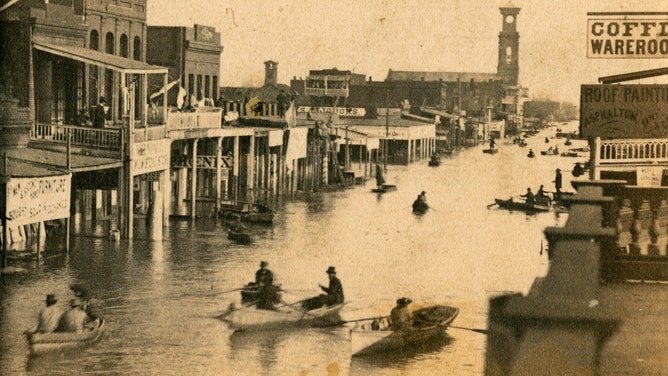
Shows buildings including Coffee Wareroom; flooded streets with men in rowboats in Sacramento, Calif. during 1861-62 floods.
(California History Room, California State Library, Sacramento, California.)
Floodwaters stretched across the Los Angeles Basin and parts of Orange County, south into San Diego. Where Disneyland sits today would have been flooded under 2-4 feet of water for 3-6 weeks, according to Schick.
WHY CALIFORNIA IS PRIMED FOR LANDSLIDES
"Poor little Snow White would have been doing the backstroke to get to Tomorrowland," he said.
Pacific Northwest goes into deep freeze
Finally, some of the cold air that had been freezing the Pacific Northwest sinks down and shuts off the storm track. But not before leaving its icy mark across that region.
The Seattle area would drop below 0 degrees, while the temp dropped to -29 degrees in Walla Walla and just 23 degrees in San Francisco. The Columbia, Willamette and Fraser rivers all froze solid.
The final tallies
It was the incredible amounts of water that fell from the sky that would leave the greatest mark.
Eight major rivers in the West still have the 1862 floods as their high-water marks: The Willamette, Rogue and Klamath rivers in Oregon, and the Stanislaus, American, Tuolomne, Salinas and Santa Ana rivers in California. Schick pointed out that the large floods of 1964 and 1996 on the Willamette may have reached those lofty levels if not for more modern-day flood control efforts.
"Proves dams and reservoirs can help," Schick said.
Snow in America's Heatlands
It might seem impossible for some of America’s hottest cities to get snow, but it has happened before. Los Angeles, San Francisco, Las Vegas, Tucson, and New Orleans have all seen measurable snow within the last century.
7 FACTS YOU SHOULD KNOW ABOUT FLASH FLOODS
The Salinas River caused major flooding earlier this year with the train of atmospheric rivers and reached a peak flood of 27 feet. In 1862, the river reached 32 feet.
In addition, the Colorado River's largest flow measurement is also from 1862 at an incredible 400,000 cubic feet per second due to massive snowmelt later in the spring.
The 50-day rainfall in San Francisco during last winter's relentless storms peaked at 20.49 inches, according to John Christy, Ph.D., with the University of Alabama. It’s a mere 63% of the 32.43 inches that fell during the 1861-62 storms.
70 feet of snow in the Sierra?
Schick estimated that as impressive as the snowpack was in the Sierras this past winter, it was likely 10-20% more in the winter of 1861-62. California's Mammoth Mountain had 715 inches of seasonal snowfall in 2022-23, but Schick estimates snowfall reached around 840 inches in 1862. Some 16 feet of snow fell in the Holcomb Valley on the eastern slopes of the San Bernardino Mountains in 1862.
THE SOUND OF SILENCE: WHY IT’S QUIETER AFTER A SNOWSTORM
Relentless snowfall in the Sierra Nevada buries Yosemite under feet of snow
An onslaught of storms pummeling the West Coast brought feet of snow to California’s Sierra Nevada, including up to 15 feet of snow in areas of Yosemite National Park.
Schick said to put that winter in perspective, take the flooding storms of this past year, then add in the major flooding storms in Northern California in 1964, 1986 and 1997 plus the major Southern California rainstorms of 1938 and 1969, and then you'll see rivers approach or exceed those all-time records.
About 4,000 people died in the floods, and the damage cost in today's dollars is around an estimated $3 billion, according to NOAA.
"We must prepare, but nothing will stop a repeat of 1861-62 ... or something even worse," Schick said. "Most disturbing is that climate models suggest stronger atmospheric rivers in the future."
WHAT DOES THE TERM '100-YEAR FLOOD' ACTUALLY MEAN?
Climatologists estimate a storm of the magnitude of 1861-62 would occur about every 200 years. Schick said his recent research using paleo sediment profiles indicated another series of atmospheric rivers that hit the area in the early 1600s may have even been much worse than 1862.
"So, understanding, modeling, and preparing for repeat is really important," Schick said.

